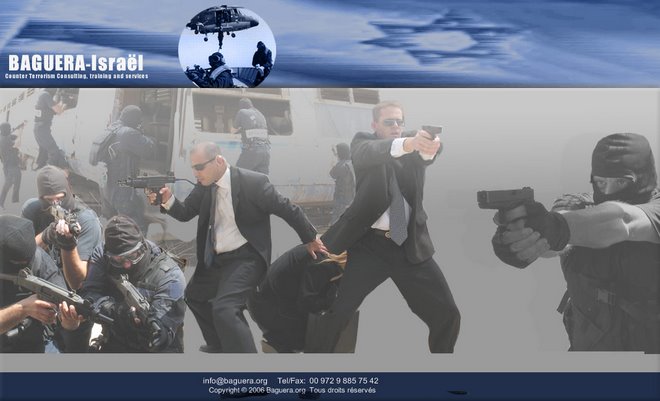at the Israel Intelligence Heritage & Commemoration Center (IICC) December 2007
Rocket threat from the Gaza Strip, 2000-2007

(Photos courtesy of the Sderot Communications Center)
1.
Overview
2.
Methodological notes
3.
Part I: The advantages and disadvantages of the use of rockets in the eyes of the Palestinian terrorist organizations
i.
Overview
ii.
Advantages
iii.
Disadvantages
iv.
Future trends
4.
Part II: The terrorist organizations' rocket launching policy
i.
General description
ii.
The Hamas Movement
iii.
Palestinian Islamic Jihad
iv.
Popular Resistance Committees
v.
Fatah groups active in the Gaza Strip
vi.
The Popular Front for the Liberation of Palestine
vii.
The Popular Democratic Front for the Liberation of Palestine
5.
Part III: Nature of the rocket threat, 2000 – 2007
i.
Scope of the attacks during the confrontation
ii.
How and from where rockets are launched
iii.
The scope of the attacks and factors influencing them
6.
Part IV: Technological aspects
i.
General description
ii.
Technological data for locally manufactured rockets
iii.
Improvement of technological capabilities
iv.
The rocket stockpiles and how they are housed
7.
Part V: The failure of the efforts to export rockets and mortar shells to the West Bank
i.
Overview
ii.
Attempts to export know-how to the West Bank
iii.
Attempts mortar and rocket attacks from the West Bank
8.
Part VI: The impact of rocket fire on the western Negev settlements
i.
Israeli settlements drawing the most fire
ii.
Casualties caused by rocket fire
iii.
The long-term influence of the rocket fire on Sderot residents
iv.
Property damage done by rocket fire
9.
Part VII: Mortar shell fire from the Gaza Strip
i.
Overview
ii.
Mortar shell fire during the confrontation, 2001-2007
iii.
The technical-tactical aspects of using mortars
iv.
Casualties caused by mortar fire
10.
Digital appendix: Rocket manufacture and fire as reported by the Arab and terrorist organization media 1
Overview
1. The main objective of this study is to analyze the terrorist organizations' use of rocket and mortar shell fire between 2000 and 2007, the years of the terrorist campaign initiated by the Palestinians (called the Al-Aqsa intifada). The study examines the extent of the fire, the policies employed by the various organizations, the factors influencing those policies, trends of escalation or lulls in the attacks, the impact on the residents of the western Negev settlements.
2. Rocket fire began in 2001 2 and during the confrontation gradually became one of primary threats coming from the Palestinian terrorist organizations. As of the end of November 2007, there has been a total of 2,383 identified rocket hits in and around the western Negev settlements, with the southern city of Sderot as a priority and drawing 45% of the rockets which landed on inhabited areas.
3. For the Palestinian terrorist organizations, rockets and mortars serve as an asymmetric response to Israel 's military superiority. They are simple, available and cheap. That response, from their point of view, even though there are problems and disadvantages, allows them to disrupt the life and rend the social fabric of the civilian population living with range, to bypass the security fence Israel constructed in the Gaza Strip and to create a kind of balance of terror to hamper the Israeli security forces' counterterrorist activities. That strategic conception was primarily inspired by Hezbollah's Lebanese model , which was regarded as successful before the Israeli withdrawal from the security zone and during the second Lebanon war. Syria and Iran support the terrorist organizations' efforts to copy the Lebanese model in the Palestinian Authority with know-how, training and the purchase of standard rockets.
4. Since 2001 rocket fire has been directly responsible for the deaths of ten Israeli civilians , nine of them Sderot residents. In addition, 433 individuals have been wounded, 3 the overwhelming majority of them civilians, and during the past year and a half more than 1,600 instances of stress were reported. Mortar fire has been responsible for the deaths of ten individuals, eight civilians and two IDF soldiers . Of the 150 wounded, 80 were civilians and 70 soldiers.
5. The damage to the civilian populace is not only measured statistically in terms of the number killed and wounded or the extent of property damage . The continued attacks have an accumulated psychological impact on the population and destroy the sense of security previously had by more than 190,000 people, who now live under the potential threat of daily rocket and mortar shell attacks . They also disrupt the routine of daily life in all the western Negev settlements, cause residents to move away (especially from Sderot), and expose the political echelons and the IDF to harsh criticism. The continuing fire hampers efforts to advance a peace treaty between Israel and the Palestinians by creating a situation of constant rocket fire and constant Israelis countermeasures.
6. In addition, between 2001 and November 2007, more than 2,500 mortar shells were fired . Their short range made them effective before the disengagement, especially when they were aimed at the IDF forces which operated in the Gaza Strip and at the Israeli settlements there. In the absence of Israeli targets after the disengagement there was a sharp decrease in the number of rockets fired . However, since April 2007 the terrorist organizations have begun to make greater use of mortar shells , especially Hamas, which does not directly participate in rocket fire. In recent months the fire has been aimed at IDF forces operating in the Gaza Strip and along the security fence, at the crossings (especially Kerem Shalom) and at the Israeli settlements close to the security fence, such as Netiv Ha'asara, Kibbutz Kerem Shalom and Kibbutz Nahal Oz .
7. This study concentrated all the data and examined the Palestinian terrorist organization policy of rocket and mortar fire, beginning when confrontation started in 2000 and going through October 2007. An examination of the following graph shows the number of attacks gradually grew (2001-2004) until the disengagement (2005), when there was a temporary drop. However, in the two following years (2006-2007) there was a sharp increase and rockets became the main weapons in the hands of the Palestinian terrorist organizations.
Annual distribution of rocket fire 4

1) As an asymmetric weapon, rockets provide the Palestinian terrorist organizations with a response to Israel 's military superiority . They are easy to manufacture, their components are cheap and readily available, and it is simple to transport and operate them. Hamas and other terrorist organizations in the Gaza Strip easily use the technology for producing large quantities of rockets, which give them the ability to attack the Israel populace in the western Negev without the IDF's having an effective response. On the other hand, they face operational difficulties when they attempt to carry out other, more difficult types of attacks from the Gaza Strip, mainly attempts to infiltrate into Israel to carry out suicide bombing attacks, shootings and abductions.
2) The strengthening of Hamas' grip on the Gaza Strip since the disengagement (August 2005) :
A) Following the disengagement, Hamas' grip on the security and politics of the Gaza Strip was strengthened at the expense of Fatah and the security services under Abu Mazen's control. Within the territorial space controlled by Hamas, the Palestinian terrorist organizations found it easy to expand their technological facilities for manufacturing rockets, smuggle in standard rockets from Egypt and make intensive use of rockets as weapons against Israel .
B) However, because of political considerations which will be discussed below, Hamas does not directly participate in rocket launches for extended periods of time, but rather grants the other organizations, especially the Palestinian Islamic Jihad, considerable freedom of action. That enabled the terrorist organizations to increase the scope of their rocket attacks significantly in 2006 and 2007 and to train their sights on new Israeli settlements (primarily the large city of Ashqelon ). When Hamas does decide to join directly in the shooting, the range of settlements affected is liable to be much greater because of the organization's potential and technical capabilities.
3) Internal Palestinian political developments and the relations between Israel and the Palestinian Authority :
A) Internal Palestinian developments among the terrorist organizations, between the terrorist organizations and the PA and between the PA and Israel all greatly influence the rocket fire policies of the various terrorist organizations, especially Hamas . As a result their rocket-launching policies sometimes had a moderating influence and sometimes led to escalation, sometimes long-term , sometimes short-term . Temporary cessations of rocket fire are exploited for rearming, training and smuggling standard rockets into the Gaza Strip for use in the future.
B) Many examples which illustrate the influence of internal Palestinian relations and Palestinian-Israeli relations on Hamas' rocket fire policies are contained in this study . For example:
i.After Arafat died in November 2004, there was a lull in the fighting resulting in a temporary decrease in the amount of rocket fire.
ii. In September 2006, Hamas stopped firing rockets after a lethal “work accident” resulted in hostile internal criticism.
iii. Since the Palestinian Legislative Council elections on January 25, 2006 and the establishment of the Hamas government in March 2006, for long periods of time Hamas has preferred not to participate directly in rocket fire.
iv. The cease fire agreed upon by the Israeli prime minister and the PA chairman on November 26, 2006, brought about a reduction in rocket fire, but did not end it.
v. The worsening of the battles between Fatah and Hamas in May 2007 made Hamas initiate a massive rocket attack unprecedented in scope.
vi. Since Hamas took over the Gaza Strip in June 2007, it has not directly participated in rocket fire because its priority is to strengthen its grip over the Strip.
C) Events and developments in Israel : Several times events and developments in Israel resulted in a change in the scope of rocket fire for short periods of time. For example:
i. In August 2005 during the disengagement there was a decrease so as not to hamper the Israelis from leaving.
ii. In September 2005, after the disengagement, there was a significant increase.
iii. On March 28, 2006, election day for the 17 th Knesset, the first 122 mm Grad rocket was fired at Ashqelon, which has been the object of rocket attacks ever since.
iv. In early September 2007, a barrage of rockets was fired at Sderot, coinciding with the beginning of the school year.
9. The operational and technological trends clearly showed that the rockets have not begun to scratch the surface of the impact they can have on Israel . In the coming years the terrorist organizations can be expected to continue their efforts to introduce technological improvements which are liable to increase rocket ranges, the amount of explosives the warheads can carry and their degree of accuracy (following the Hezbollah model in Lebanon). There may be much more rocket fire, both as technological developments extend the rockets' shelf life and because following political developments, Hamas may join the organizations launching rockets. At the same time, there may be an increase in the organizations' arsenals of standard rockets which have a range of more than 20 kilometers (more than 12 miles ), which would enable them to attack more settlements.
10. The variety of military and civilian actions taken by Israel during the years of the confrontation hampered the rocket fire, prevented several attempted launches and reduced the number of casualties. However, to date Israel has not found an appropriate response to the rocket threat which has grown alarmingly during the past two years, and which today is the terrorist organizations' main threat against Israel .
Israeli settlements within range of rocket fire 5
11. This study collected and analyzed the information about rocket and mortar shell fire in the seven years of the current conflict (2000-2007). As it was being prepared it became clear that the Israeli defense establishment uses different statistical methods to define the data. As a result some of the statistics are different because of methodological differences in tracking rocket and mortar shell fire.
12. In this study we used rocket and mortar shell fire data based on the Operational Division of the IDF General Staff. Rocket or mortar shell fire is defined in the study as an event, during which a launch is tracked and the hit is clearly identified as falling in Israeli territory (or close to an IDF force, or an Israeli settlement in the Gaza Strip before the disengagement). It is also defined as an event during which a launch from the Gaza Strip is tracked and an explosion is heard, even if the location of the hit is not clearly identified. Regarding our statistics, it should be taken into account that the actual number of rockets launched may be at least 20% greater than the number of hits identified. Rocket fire and mortar shell fire data were separated because in our assessment the two are different in nature and each Palestinian terrorist organization has its own policies regarding them.
13. Monitoring information provided by the media about the Palestinian terrorist organizations' claims of responsibility for the rocket and/or mortar shell fire showed that in certain instances the organizations claim many more fired than those located in Israeli territory . In our assessment, there are two factors behind the disparity: one, many of the launchings were in fact carried out but did not reach Israel and the rockets/mortar shells fell either in the Gaza Strip itself or in the sea; two, often the reports issued by the terrorist organizations are unreliable. For example, often several organizations claim responsibility for the same event. Therefore, although this study also used statements made by the terrorist organizations, they were not considered a reliable source.
14. The data in this study update and replace those which appeared in the past in Information Bulletins issued by the Intelligence and Terrorism Information Center .
15. Sources : This study is based on information received from the Operational Division of the IDF General Staff, military intelligence and other Israeli security sources. Use was also made of the Arab and terrorist organization media, and previous ITIC publications. It is accompanied by a digital appendix of videos broadcast on television, dealing with the manufacture and launching of rockets.
The examination of the data and the analysis of the terrorist organizations' policies was carried out by the researchers of the ITIC. Therefore, the opinions and conclusions presented in this study represent only the ITIC.
The full English translation of the study will be issued in the coming days
--------------------------------------------------------------------------------
1 Based on films shown of Al-Arabiya TV, Al-Aqsa TV, Al-Jazeera TV and the Hamas and Palestinian Islamic Jihad Websites.
2 The official Hamas announcement of the firing of a Qassam 1 rocket at Sderot was made on November 1, 2001. It had been fired a few days previously.
3 As of October 2007.
4 As of the end of November 2007.
5 The ranges were calculated from the launching areas in Gaza Strip and not from the security fence. 122 mm rockets with a range of 20.4 kilometers were used only a few time.
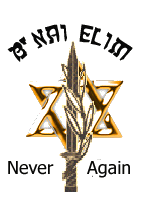
















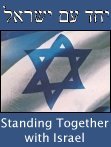

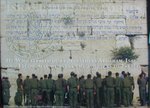
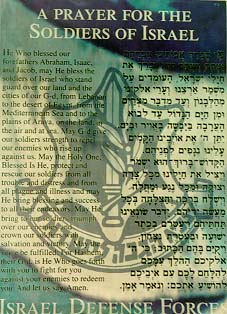







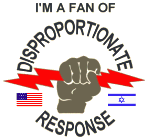



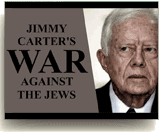
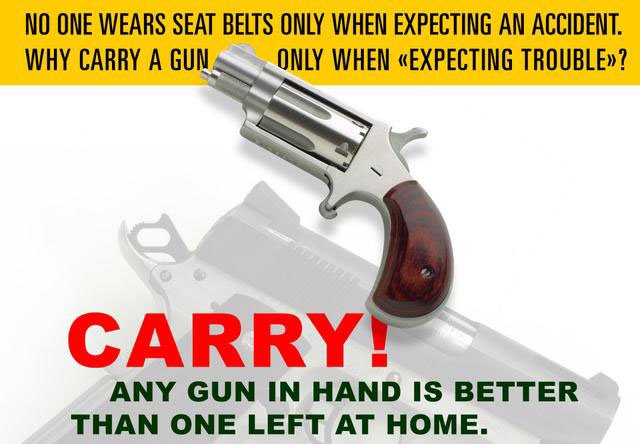
 While doing IDF (Israel Defence Forces) reserve duty on a mountain overlooking the
While doing IDF (Israel Defence Forces) reserve duty on a mountain overlooking the 

